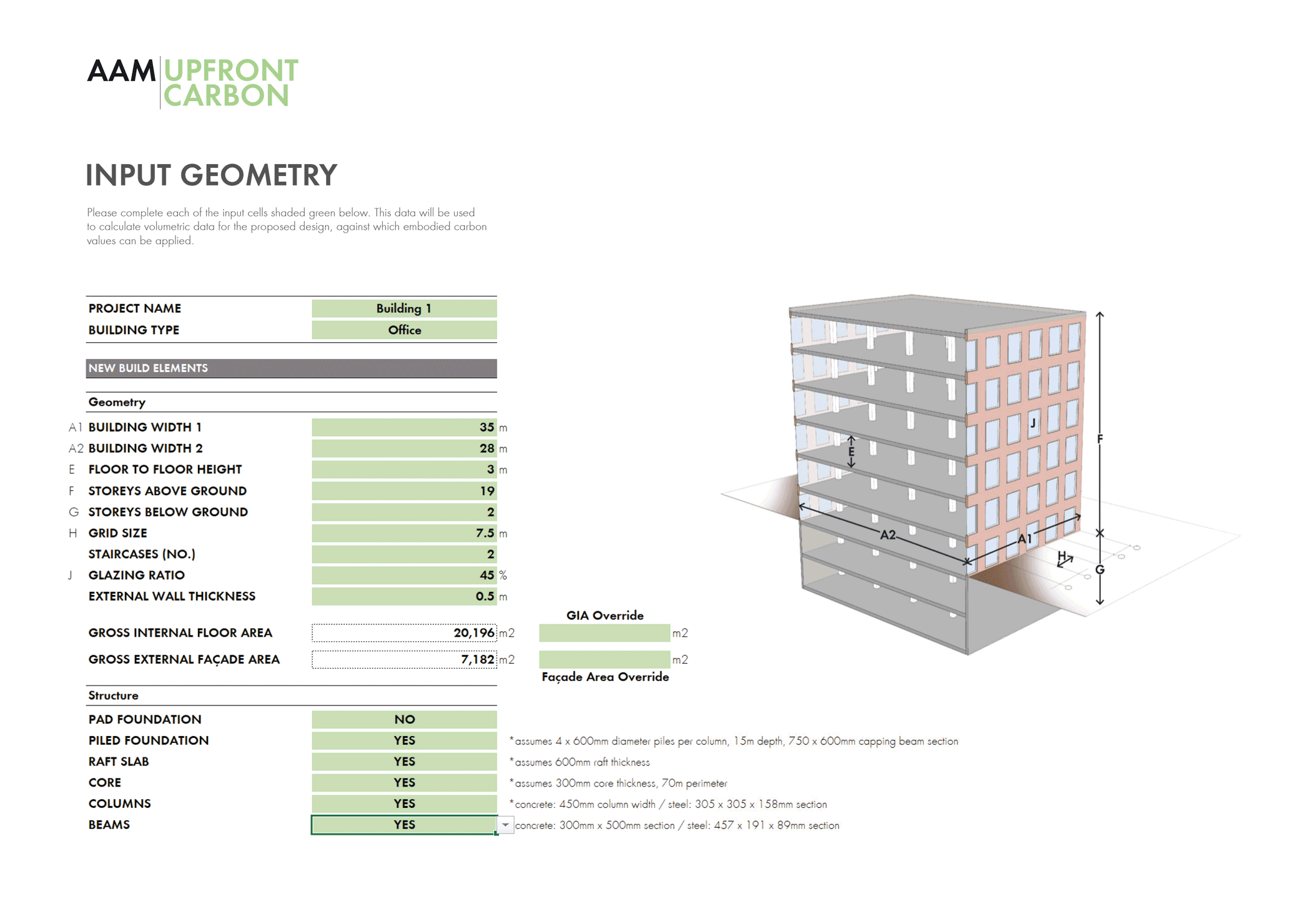Much of architecture's rhetoric about carbon is concerned with the emissions of building operations over their life. But for many buildings, their embodied carbon - that is, the emissions involved in their construction - can be up to or more than 50% of its whole life emissions. Developed in-house, our Upfront Carbon tool provides designers with deep insights into how their design decisions will impact the embodied carbon of future buildings.

The built environment is responsible for nearly 40% of annual global carbon emissions. But amidst a growing emphasis on net zero carbon commitments, reductions in embodied carbon may offer the biggest opportunities in reducing carbon emissions associated with the built environment. As the emissions associated with the operation of buildings continue to reduce, these 'embodied carbon emissions' become the dominant source of carbon emissions over a building's life.
In many ways, embodied carbon represents more of a known entity in terms of its impact. The use of Environmental Product Declarations (EPDs) help quantify the embodied carbon of construction materials, controlled through design (volume) and specification (standard and tolerance). This is in stark contrast to operational emissions, which are influenced by many more variables including occupant behaviour and system efficiency. The vast majority of embodied emissions are also incurred within a far more concentrated period of time – often between 1-5 years of construction rather than 60+ years of operation.
The full extent of this embodied dimension shines new light on the impact and influence of design teams. But the carbon fluency of architects remains relatively low, whereas most established analysis tools are aimed at users with better understanding and targeted for use at later design stages.
We recognised these shortcomings as an opportunity. An opportunity to create a new embodied carbon tool that is simple to use, builds fluency amongst designers and stimulates discussion within larger project teams. But most importantly we felt the need for a tool that could be utilised from as early as RIBA Stage 1, before a concept has even been developed.
Upfront Carbon is an Excel-based analysis tool that provides deep insights to embodied carbon analysis via an intuitive interface. With no requirement for a pre-existing model, designers can speculatively generate embodied carbon data, before assessing a series of iterative changes aimed at minimising the embodied carbon footprint.